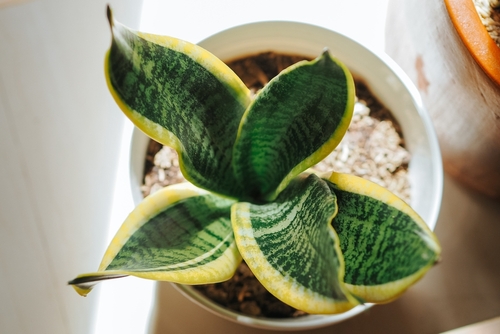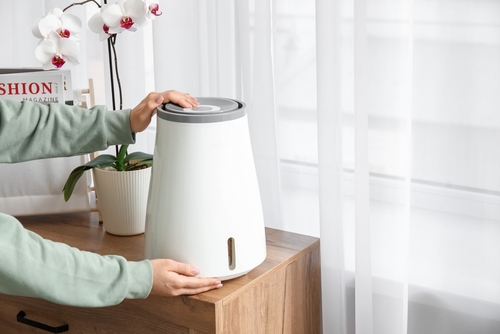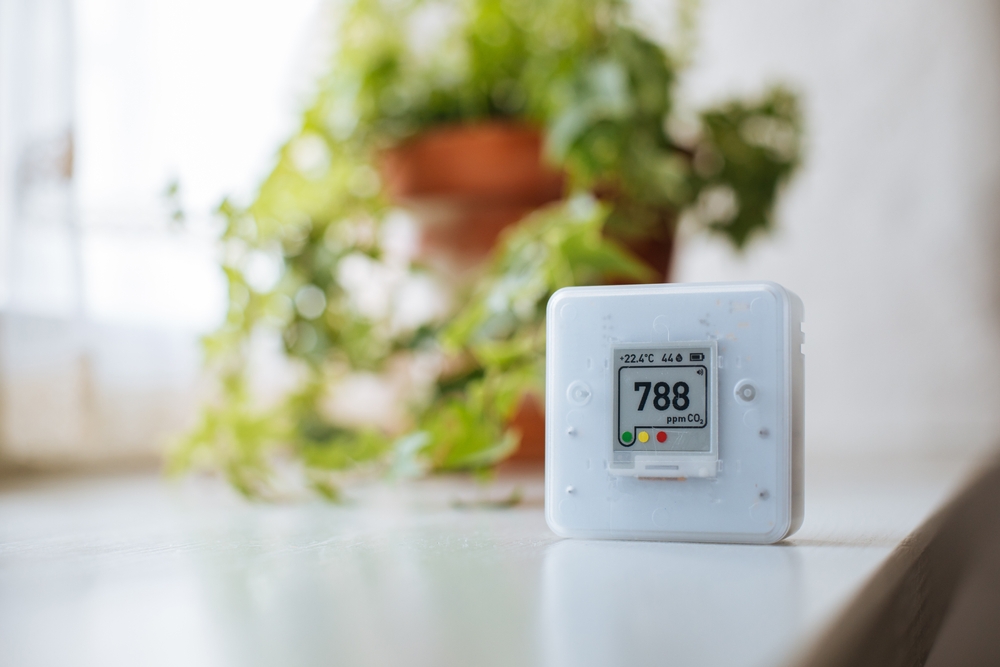Good indoor air quality is essential for our health and wellbeing.
Poor indoor air quality can lead to a range of health problems, including respiratory infections, allergies, asthma, and chronic respiratory illnesses. Fortunately, there are several simple steps that you can take to improve the air quality in your home.
Below, property expert Natalie Mitchell at HomeHow.co.uk explains several ways in which you can improve the air quality in your home. By following these tips, you can achieve a much cleaner home, improve your wellbeing, and even improve your overall health.
Ventilation Is Key
First of all, proper ventilation is crucial for maintaining good indoor air quality. Fresh air help to dilute pollutants, remove stale air and reduce moisture levels. A lot of moisture in the home can lead to mould and mildew, so this is something that you want to try to avoid at all costs.
Here are some tips for improving the ventilation in your home:
- Open Your Windows – Whenever possible, open the windows in your home to allow fresh air to enter. This is especially important in the morning and evening when outdoor air pollution levels are typically lower.
- Use Exhaust Fans – Use exhaust fans in your kitchen and bathroom to help remove moisture, cooking fumes, and other pollutants.
- Install a Ventilation System – For optimal results, consider installing a mechanical ventilation system such as a whole-house fan or a heat recovery ventilator (HRV). These systems can help to circulate fresh air throughout the home, even when the windows are closed. They can also help to control the humidity levels in the home and remove pollutants.
Reduce Indoor Pollutants
Indoor pollutants can come from a range of different sources. Some examples include cooking fumes, cleaning products, pet dander, mould, and outdoor air pollution that enters the home through open windows and doors.
Here are some tips for reducing indoor air pollutants:
- Choose Non-Toxic Cleaning Products – Whenever possible, opt for natural cleaning products that are free from any harsh chemicals. You can make you own cleaning solutions using baking soda, white vinegar, and essential oils. Avoid using air fresheners and other scented products as these can release volatile organic compounds (VOCs) into the air.
- Cook with the Hood On – Make good use of your cooker hood whenever cooking to capture the cooking fumes and prevent them from spreading throughout your home.
- Keep Your Home Clean – Regular cleaning can help to remove dust, allergens, and other pollutants. Vacuum carpets and hard floors regularly and dust your home’s surfaces with a damp cloth. Pay special attention to areas like underneath appliances and behind furniture, where dust and allergens can accumulate.
- Control Humidity – High humidity can create a breeding ground for mould and mildew. Consider making use of a dehumidifier to keep humidity levels between 30% and 50%. You can also use a hygrometer to measure the humidity levels in your home.
- Mind Your Pets – Pet dander can trigger allergies and asthma. Make sure to keep your pets clean and well-groomed and consider using some air purifiers around the home to remove pet dander from the air.
- Reduce Outdoor Air Pollution – On days when there is high air pollution outdoors, keep your windows and doors closed. Use air filters on your heating and cooling systems to remove pollutants from the outdoor air.
Improve Indoor Air Quality With Plants
Houseplants are brilliant little tools for helping to improve indoor air quality. Plants can help to absorb pollutants and release oxygen.

Below is a list of some of the best air-purifying plants to consider bringing into your home:
- Snake Plant – This hardy plant is very low-maintenance and is effective at removing toxins such as benzene and formaldehyde.
- Peace Lily – This is an elegant plant that can remove certain toxins such as formaldehyde, benzene, and trichlorethylene.
- Rubber Plant – This large, leafy plant can remove toxins like toluene, formaldehyde, and xylene.
- Spider Plant – This is a very versatile plant which is great for removing toxins such as carbon monoxide, benzene, and formaldehyde.
- Aloe Vera – This hardy succulent plant is great for removing toxins such as benzene and formaldehyde.
To maximise the air purifying benefits of plants, place them strategically throughout your home. Consider the size of the plant, the number of plants in each room, and the specific pollutants that you want to remove.
Make Use of Air Purifiers
Air purifiers can help to remove pollutants from the air, including pollen, dust, pet dander, mould spores, and other harmful particles. When choosing an air purifier, you want to look out for one with a High-Efficiency Particulate Air (HEPA) filter. HEPA filters can remove around 99.97% of airborne particles, including those as small as 0.3 microns.

When selecting your air purifier, consider the size of the room and the level of air pollution in your home. You may need to bring in multiple air purifiers to effectively clean the air in your entire home.
Final Thoughts
So, there you have it! By following these simple tips, you can create a healthier and more comfortable living environment for yourself and your family. Taking steps to improve your indoor air quality can significantly improve your overall health and wellbeing. Remember, fresh air, a clean home, and a little plant power can go a long way in creating a healthier and happier you.
NATALIE MITCHELL: “NatalieMitchellhas worked as a property and construction expert for HomeHow for five years and has worked in the construction industry for over twenty years.Natalie continues to work on building projects while also providing expert construction and property advice to industry professionals and DIY enthusiasts.”





